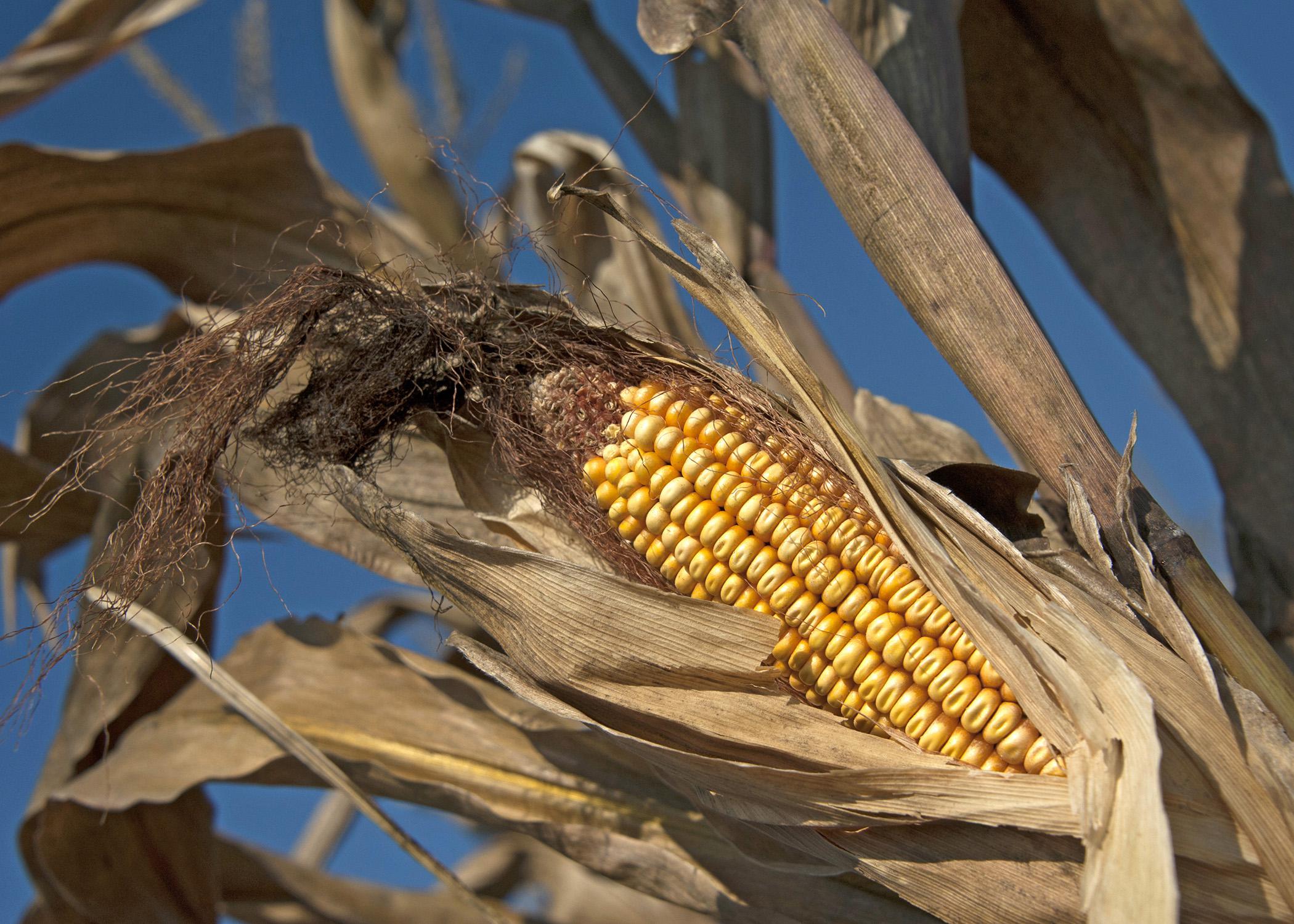Information Possibly Outdated
The information presented on this page was originally released on December 19, 2013. It may not be outdated, but please search our site for more current information. If you plan to quote or reference this information in a publication, please check with the Extension specialist or author before proceeding.
Corn posts record average yield, but prices drop value
MISSISSIPPI STATE -- Corn retained its No. 4 spot in Mississippi agriculture with an estimated value of $631 million, despite a 31 percent decrease in value caused mostly by reduced commodity prices.
Corn trails behind the state’s top three agricultural commodities: No. 1 poultry, with an estimated value of $2.7 billion; No. 2 forestry, $1.17 billion; and No. 3 soybeans, $993 million.
Corn also set a new Mississippi production record with an estimated average yield of 180 bushels per acre. Mississippi growers harvested about 815,000 acres of corn in 2013, although they had intended to plant their largest corn acreage in the last 40 years.
John Michael Riley, agricultural economist with the Mississippi State University Extension Service, said the value decrease is primarily the result of prices that dropped more than $2 a bushel.
“Corn’s projected average price for the state is $4.40 a bushel, down from $6.89 a bushel received in 2012,” Riley said.
Corn prices started in the range of $6 to $6.50 but fell sharply in June and July when it became apparent that the nation’s crop would break records.
“The drop midyear was a result of increased production, which will remove the very tight supply situation the market has been in for the past few years,” he said.
Erick Larson, Extension grain crops agronomist, said the record per-acre yield is a reflection of the outstanding 2013 growing season.
“We had very favorable, cool, nighttime temperatures in June and July, as well as some rainfall that helped out with irrigation and replenishing soil moisture deficiencies at key times of the year,” Larson said.
“Unfortunately, the persistent rainfall this spring substantially limited corn planting,” he said. “Most of Mississippi was affected, but corn plantings were drastically reduced in northern counties, where many dryland acres were planted to soybeans rather than corn.
“Most of the corn in the state was planted the first 25 days of March,” he said. “From then until early May, there were very few opportunities to plant. A lot of the acres that were intended for corn, but never planted, were dryland acres. The state’s per-acre yield in 2013 is more reflective of irrigated yields.
“In Mississippi, irrigated land normally produces yields of 50 to 100 bushels of corn more per acre than does nonirrigated land,” he said.
Larson said fully one-third of the nation’s corn crop is used in ethanol production, a demand that has reduced much of the corn crop carried over from year to year.
“There is some profitability in the production of U.S.-based fuels,” he said. “A lot of farmers are actually part owners in ethanol cooperatives. It’s another alternative for them to generate some income from their surplus agricultural products.”
Brian Williams, an Extension agricultural economist, said the entire national corn crop set a production record, and next year’s numbers are expected to be almost as high.
“Demand for corn is increasing, and exports are supporting prices despite the higher production,” Williams said.










